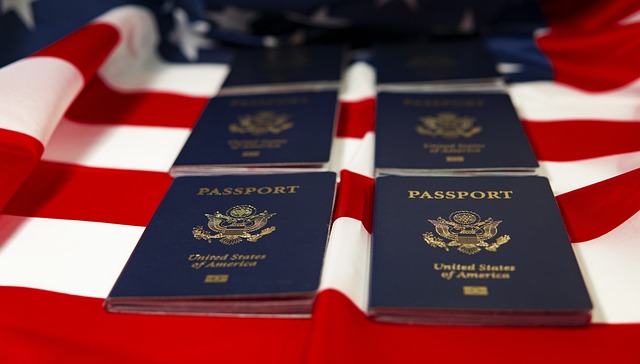Italian Work Visas and Permits: Requirements and Application Process

Italy, with its rich cultural heritage, stunning landscapes, and thriving economy, is a popular destination for expatriates seeking employment opportunities. Whether you’re a skilled professional, an entrepreneur, or a seasonal worker, obtaining the correct visa and work permit is essential for legally working in Italy. In this article, we’ll explore the various types of Italian work visas, their requirements, and the step-by-step application process.
1. Types of Italian Work Visas
Italy offers several types of work visas depending on the nature of your employment, duration of stay, and qualifications. Below are the most common categories:
a. Subordinate Employment Visa (Type B)
This visa is for individuals who have secured a job offer from an Italian employer. It’s suitable for full-time employees, including skilled professionals, blue-collar workers, and domestic helpers.
b. Self-Employment Visa
If you plan to start your own business, work as a freelancer, or provide professional services in Italy, you’ll need a self-employment visa. This category includes entrepreneurs, artists, and consultants.
c. Seasonal Work Visa
Designed for short-term employment, this visa is ideal for those working in tourism, agriculture, or hospitality during peak seasons (e.g., summer or harvest periods).
d. EU Blue Card
The EU Blue Card is aimed at highly skilled non-EU workers. It allows holders to live and work in Italy while enjoying certain benefits, such as easier family reunification and mobility within the European Union.
e. Intra-Company Transfer Visa
For employees transferred to an Italian branch of their current company, this visa facilitates temporary assignments lasting up to three years (or one year for trainees).
f. Researcher Visa
Academics, researchers, and scientists collaborating with Italian institutions can apply for this visa under specific agreements like the “Hosting Agreement.”
2. General Requirements for Italian Work Visas
While the exact requirements vary depending on the type of visa, here are the general documents and criteria needed for most work visas:
a. Valid Passport
Your passport must be valid for at least three months beyond your intended departure date from Italy.
b. Job Offer or Contract
A signed employment contract or letter of invitation from an Italian employer is mandatory for subordinate employment visas. For self-employed individuals, a detailed business plan or proof of registration may be required.
c. Nulla Osta (Work Authorization)
Before applying for a work visa, your prospective employer must obtain a Nulla Osta (work authorization) from the Italian Ministry of Labor. This document confirms that there are no qualified Italian or EU citizens available to fill the position.
d. Proof of Qualifications
You may need to submit diplomas, certifications, or other evidence of your skills and qualifications relevant to the job.
e. Health Insurance
Comprehensive health insurance coverage is often required to ensure you can access medical care during your stay.
f. Financial Means
You must demonstrate sufficient financial resources to support yourself during your initial period in Italy, especially if your salary won’t cover living expenses immediately.
g. Criminal Record Check
A clean criminal record certificate issued by your home country may be requested.
h. Visa Application Form
Complete the official visa application form, which can usually be downloaded from the website of the Italian consulate or embassy in your country.
i. Passport-Sized Photos
Recent photographs meeting specific size and background requirements are necessary.
j. Payment of Fees
Visa processing fees vary depending on the type of visa and your nationality. Ensure you pay all applicable charges when submitting your application.
3. Step-by-Step Application Process
Here’s a breakdown of how to apply for an Italian work visa:
Step 1: Secure a Job Offer
Before anything else, you need a confirmed job offer from an Italian employer. They will initiate the process by requesting a Nulla Osta from the Ministry of Labor.
Step 2: Gather Required Documents
Collect all the necessary paperwork, including your passport, employment contract, qualifications, and financial proofs. Make sure translations into Italian are provided where needed.
Step 3: Submit Your Application
Visit the nearest Italian consulate or embassy in your home country to submit your visa application. Some consulates allow online submissions, so check their guidelines beforehand.
Step 4: Attend an Interview
Depending on the visa type, you may be called for an interview to discuss your intentions and verify your eligibility.
Step 5: Wait for Processing
Processing times vary but typically range from 15 to 90 days. During this time, avoid making travel plans until your visa is approved.
Step 6: Obtain a Residence Permit (Permesso di Soggiorno)
Once you arrive in Italy, you must apply for a residence permit (Permesso di Soggiorno ) within eight days of entry. Visit your local post office to collect the application kit, then submit it along with your biometric data and supporting documents to the immigration office (Questura).
4. Special Considerations
a. Family Reunification
If you’re moving to Italy for work, you can sponsor visas for immediate family members (spouse and dependent children). Additional documentation, such as marriage certificates and birth records, will be required.
b. Language Proficiency
While not always mandatory, having basic knowledge of Italian can significantly enhance your integration into the workplace and society. Some employers may require language proficiency tests.
c. Recognition of Foreign Qualifications
Certain professions, such as doctors, engineers, and teachers, may require recognition of foreign qualifications through the appropriate Italian regulatory bodies.
d. Tax Obligations
As a worker in Italy, you’ll be subject to Italian taxation. Familiarize yourself with tax laws and consider consulting a financial advisor to understand your obligations.
5. Tips for a Successful Application
- Start Early: The entire process—from securing a job offer to receiving your residence permit—can take several months. Begin preparations well in advance.
- Double-Check Documents: Ensure all documents are accurate, complete, and translated into Italian if necessary.
- Stay Updated: Immigration policies can change, so regularly check the websites of Italian embassies, consulates, and the Ministry of Foreign Affairs for updates.
- Seek Professional Help: If the process seems overwhelming, consider hiring an immigration lawyer or consultant specializing in Italian visas.
6. Common Challenges and How to Overcome Them
a. Long Processing Times
Delays can occur due to high demand or incomplete applications. To minimize waiting periods, submit your application early and ensure all documents are in order.
b. Difficulty Finding Employers Willing to Sponsor
Some employers hesitate to hire non-EU workers due to bureaucratic hurdles. Networking, using recruitment agencies, and targeting industries with labor shortages (e.g., IT, healthcare) can increase your chances.
c. Language Barrier
Not speaking Italian fluently can pose challenges, especially in smaller towns. Taking language courses before or after arrival can help bridge this gap.



